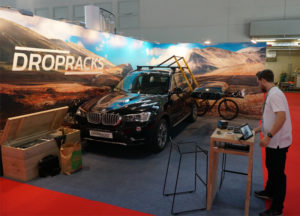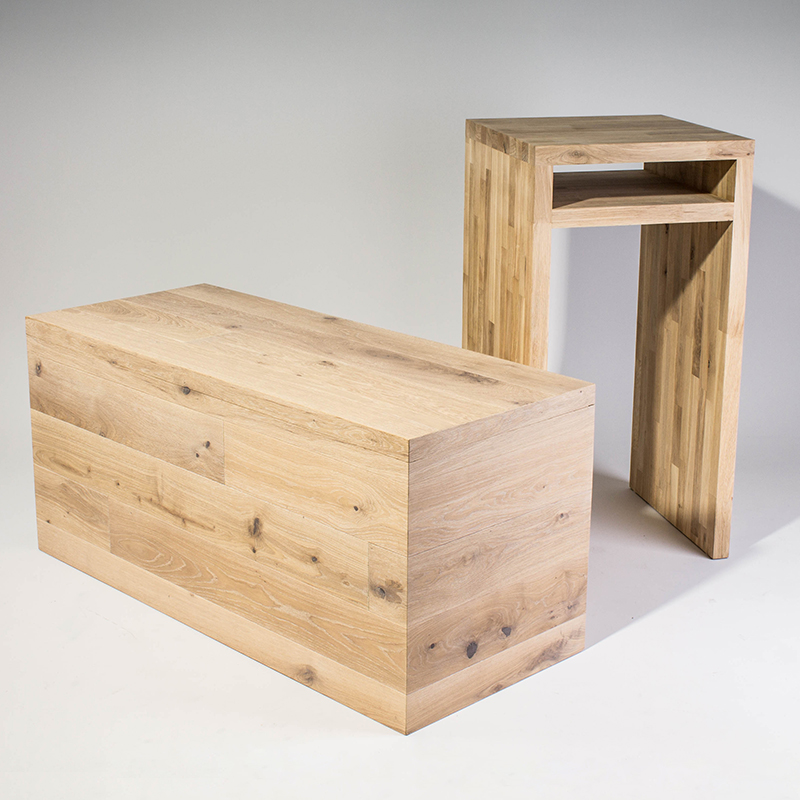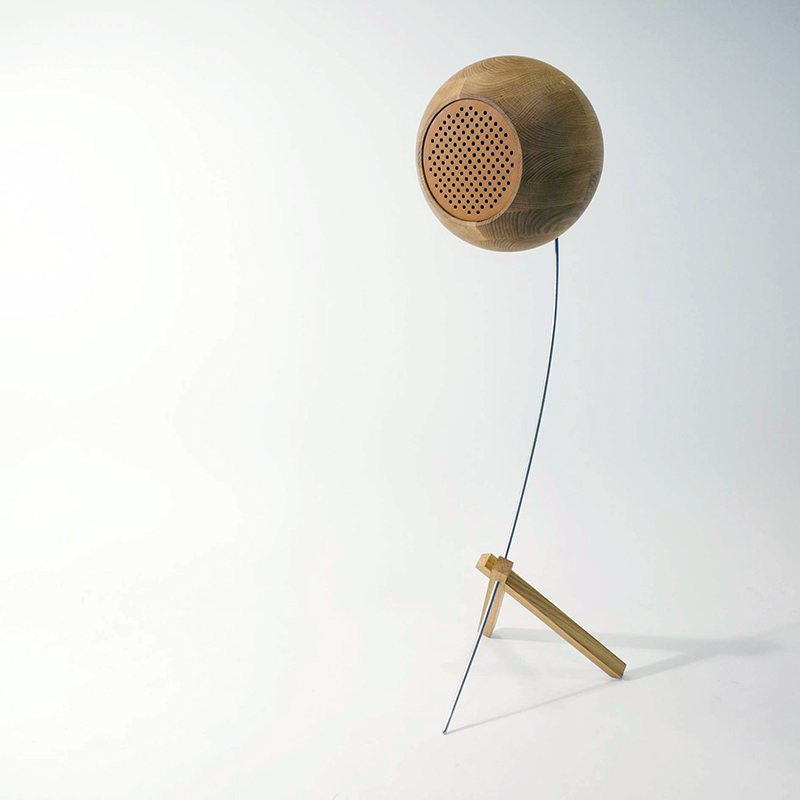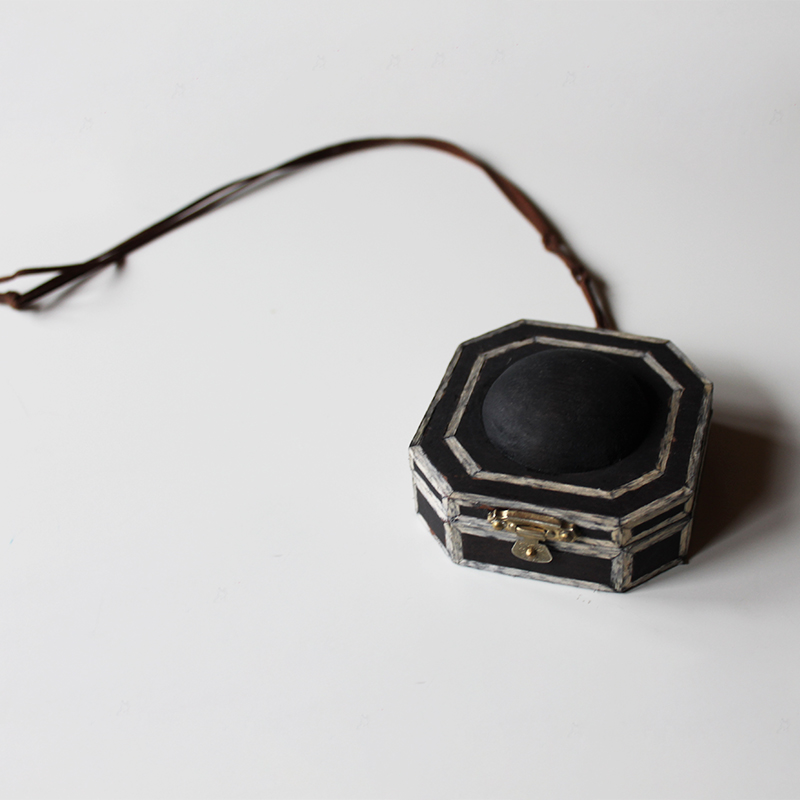In 2016 I got asked if I wanted to make some simple stand furniture for the start-up company Dropracks (dropracks.no) and their stand at Automechanika Frankfurt.
With their designer being a good friend of mine, and with it being a paid assignment, it was no question about it.
I was mostly a builder in this project, since my friend already had some ideas for the items. The first would be a table that would work together with a couple of Hee bar stools form Hay, and the second would be a chest in which they could keep their stuff at the exhibition.
They supplied the material, which was an edge grain butcher block oak slab, and some oak floor boards.
We figured out the dimensions and the expression they wanted (it should fit a large printed back drop they would have on the stand), and I started building them.
The butcher block slab was cut to length, precisely measured and marked out, and assembled with glue and dominoes (oblong wooden dowels/loose tenons) to create the table. We talked about reducing the weight and such, but this was the design they wanted.
The construction of the chest was a bit more difficult than the table. But since this was going to be used as a visual prop for the people visiting the stand, the interior of the chest did not have to be nice looking, and this made it a bit easier to build. Therefore, the back and bottom of the chest is made from pine and/or birch plywood (I can’t really remember), and there are some structural elements of spruce inside.
I started the build by making the front and sides. I wanted the grain pattern to wrap around the box, so I laid out all the boards in the configuration I wanted, and marked where to cut them. I then cut them roughly to length and assembled them into panels with some spruce structure. When these and the lid were assembled individually, I cut the 45-degree mitres on all the panels (as well as the plywood ones) making sure to cut all lengths that were the same with the same setup to avoid as much problems/gaps as possible. Having placed the spruce structure strategically I could then screw (and glue) all the panels together from the inside, leaving the bottom open for access. Continuing with the wish to have the grain pattern undisturbed, I had not made the lid separate from the box yet. The plan was to cut it open in the end. I had from the start figured out where the cut for the lid should be, and I had made sure that there would be no screws or metal in that area that could come in contact with the saw blade. So, with the bottom still off, I placed the box on the short side on top of the table saw, pushed the top against the dialled in fence, and cut the first side, then I did the same with the front, the other side and the back.
This is a difficult and potentially dangerous cut, with such a large surface area generating friction against the push, so I took precautions and dry-tested the movements on the saw with the blade out of the way to try to identify any potential problems. The cut did not align perfectly, but it went well enough. I can’t remember now if I ended up doing it then, or if it is just the hindsight kicking in, but I thought about not cutting all the way through the panels on the table saw, but rather leave 1 mm or something, so that the blade would never protrude into the box and fill it with sawdust. Because all that distracting dust could make the cut even more dangerous, as well as the fact that oak dust is something you don’t really want to breathe in. But I think what I actually did was just holding a vacuum hose inside while cutting. What I did not do was cut through the inside structure so that the lid would fall of straight after cutting. This made everything easier, and I did not have to wedge the cut kerf during the last cuts. I cut the inside structure with a Japanese pull saw, and cleaned up the surfaces with a hand plane.
I added the bottom, some alignment pins on the inside to make the lid close nicely every time, and some springs to hold the lid open when needed, and after some sanding and a bit of oil, they were both finished.
The furniture worked well, and everyone were happy.




